4C’S of Diamond
The Definitive Guide
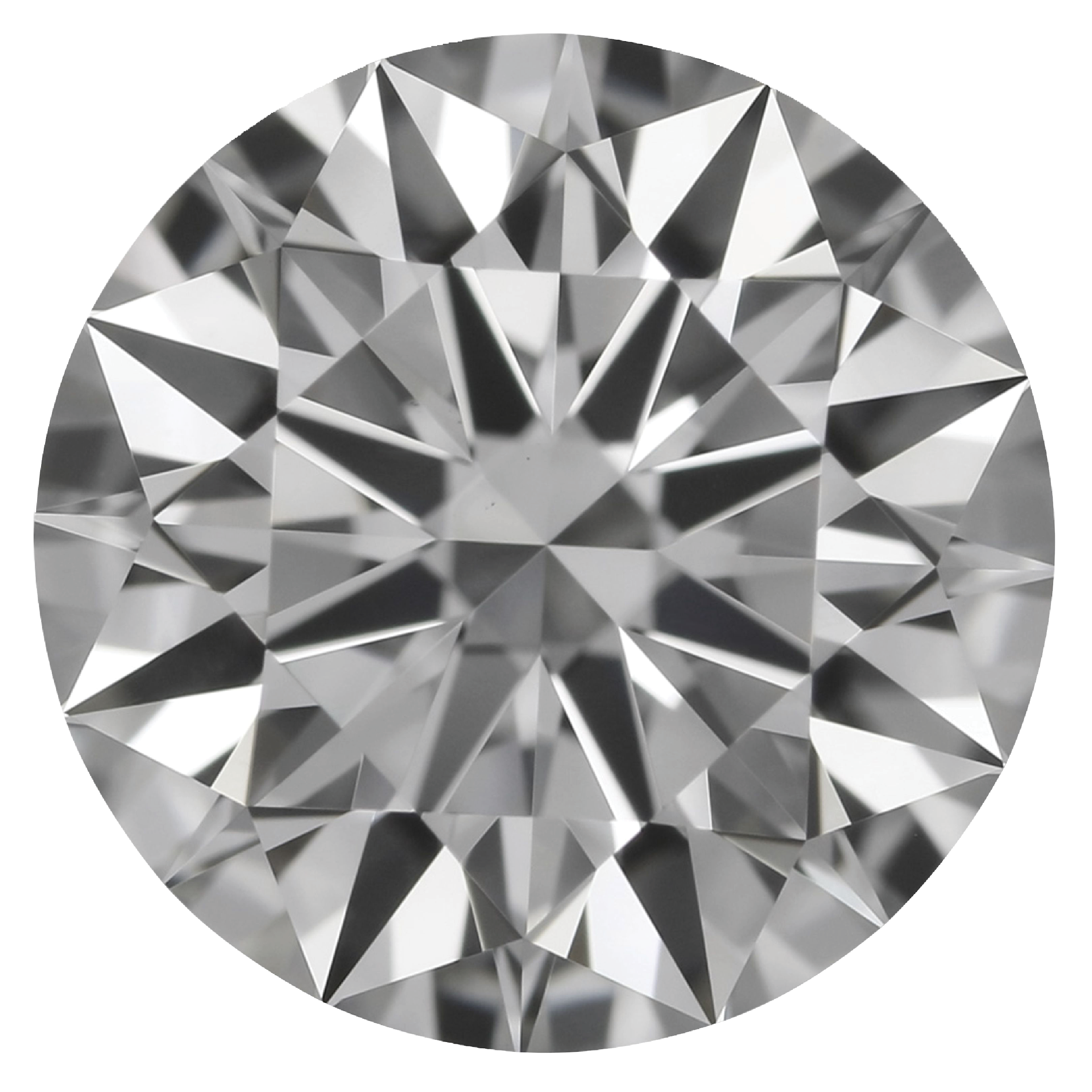
A diamond’s quality is determined by the 4C’s
Cut
Quality of the angles,
proportions, facets,
and finishing details
Colour
How colourless
the diamond is
the diamond is
Clarity
How clean the diamond
is of inclusions and
blemishes
is of inclusions and
blemishes
Carat
The weight of
the diamond
the diamond
These four qualities of a diamond are the key components that impact its beauty and structure.
The 4C’s interact with each other within the diamond. They dictate how the diamond appears and
how high quality it is. As an example, the diamond’s ability to reflect light back to your eyes depends
primarily on cut quality but also on colour and clarity.
CARAT
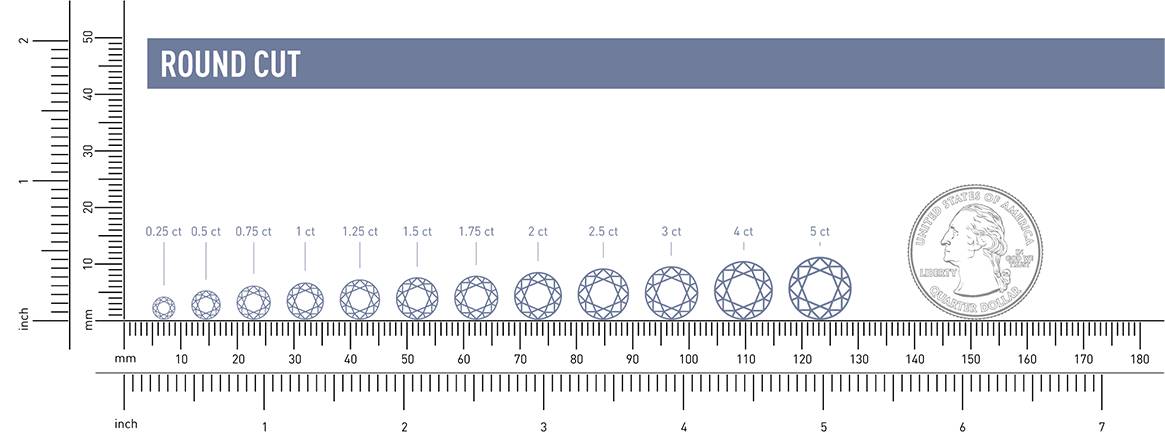
Carat weight is a measure of a diamond’s weight and a reflection of its size
A carat is a unit of measurement used to weigh a diamond. One carat is equal to one-fifth of a gram (0.2 gram) or 200 mg. One carat is equal to 100 points or 100 cents. Carat weight is the most objective of the 4 C’s of diamonds as it involves no estimates, comparisons or judgments. Carat weight is directly related to a diamond’s value because (all else being equal) larger diamonds are rarer than smaller ones.
CUT

A quality cut grade allows a diamond to express its natural sparkle and scintillation
The cut is the most critical component of the 4C's, since the value of two diamonds with exactly the same carat weight could vary by up to 50% depending on the quality of cut. Just as fine cloth needs an expert tailor to create a quality garment, the diamond cutter controls the fire and brilliance of a diamond. Cut of a diamond refers to how well a stone is cut and faceted to bring out the full beauty of the rough crystal.
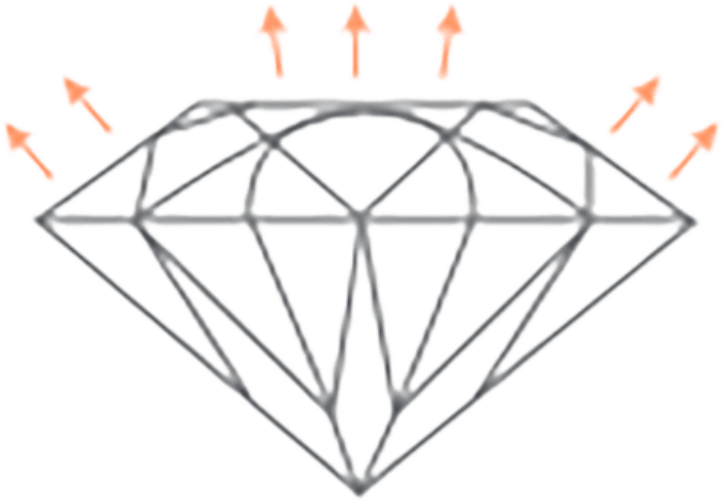
Ideal Cut
An ideal cut diamond has
impeccable brilliance
which has the perfect
angles and has excellent
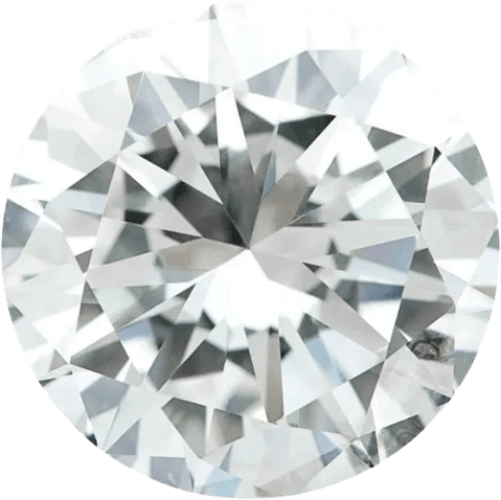
Ideal Cut
An ideal cut diamond has
impeccable brilliance
which has the perfect
angles and has excellent
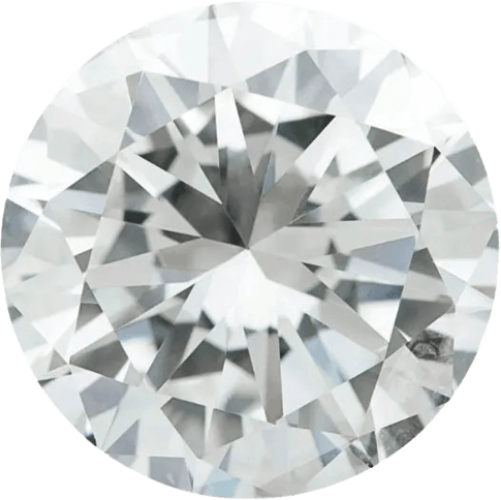
Ideal Cut
An ideal cut diamond has
impeccable brilliance
which has the perfect
angles and has excellent

Ideal Cut
An ideal cut diamond has
impeccable brilliance
which has the perfect
angles and has excellent
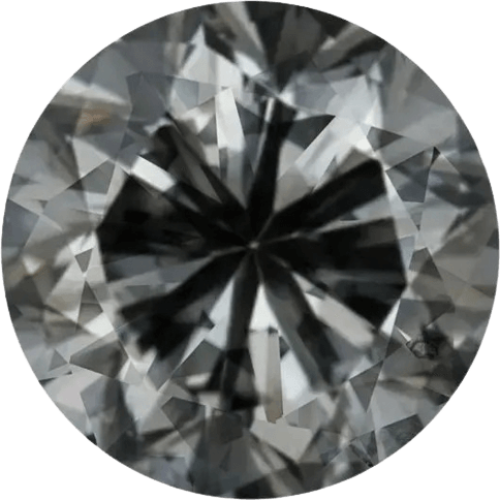
Ideal Cut
An ideal cut diamond has
impeccable brilliance
which has the perfect
angles and has excellent
PROPORTIONS
(IMPORTANCE OF CUT)
Diamonds are cut in many shapes but, it is the precision with which facets are polished onto a diamond, which allows it to capture light and release its brilliance and fire.
Polish and Symmetry are two other important aspects of the cut. Polish describes the smoothness of the diamond’s facets (surface conditions), and Symmetry refers to the alignment of the facets (the exactness of shape and placement of the facets).
Polish and Symmetry are two other important aspects of the cut. Polish describes the smoothness of the diamond’s facets (surface conditions), and Symmetry refers to the alignment of the facets (the exactness of shape and placement of the facets).
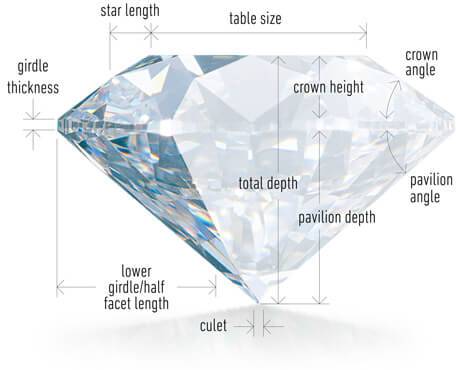
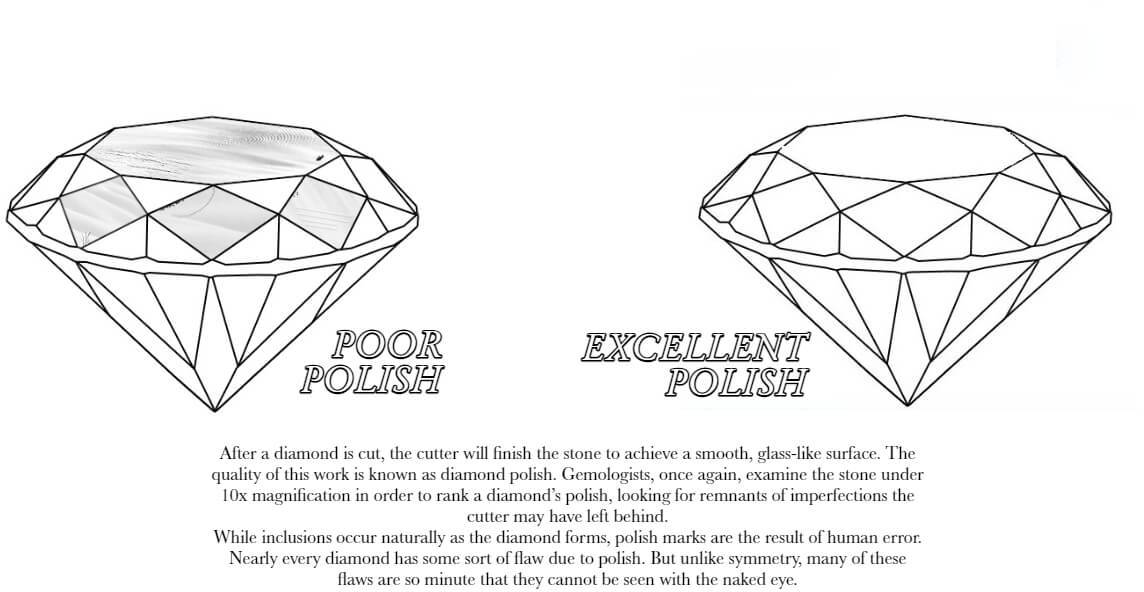
diamond polish
Diamonds are cut in many shapes but, it is the precision with which facets are polished onto a diamond, which allows it to capture light and release its brilliance and fire.
Polish and Symmetry are two other important aspects of the cut. Polish describes the smoothness of the diamond’s facets (surface conditions), and Symmetry refers to the alignment of the facets (the exactness of shape and placement of the facets).
Polish and Symmetry are two other important aspects of the cut. Polish describes the smoothness of the diamond’s facets (surface conditions), and Symmetry refers to the alignment of the facets (the exactness of shape and placement of the facets).
Symmetry
Symmetry of a diamond means that each facet must be consistently sized and positioned opposite its corresponding facet. Symmetry refers to the alignment of one part of the diamond to another. The exactness of a finished diamond's shape and the placement of its facet constitute symmetry. Poorly cut diamonds can leak light, which can affect the appearance of the diamond and diminish its brightness, fire, and scintillation. Therefore, to maximize the diamond's potential, symmetry is essential. Sub-grades in Symmetry as a parameter
color

This grade refers to the ‘whiteness’ of a diamond or its lack of color.
The color of a diamond is one of the vital factors influencing the price of diamond. In diamonds, the best color is no color at all. Colorless diamonds are extremely rare, hence making them the most sought after. Contrary to common belief, all diamonds are not truly colorless. They actually come in many different colours – commonly faint yellow or brown.
Colorless diamonds allow the maximum refraction of light thus maximising brilliance. In comparison Off White diamonds absorb light hence inhibiting Brilliance. There is now an internationally recognized color grading scale that starts at D (colorless), and goes down to Z (light yellow). Each letter grade represents a range of color and is a measure of how noticeable the color is.
Colorless diamonds allow the maximum refraction of light thus maximising brilliance. In comparison Off White diamonds absorb light hence inhibiting Brilliance. There is now an internationally recognized color grading scale that starts at D (colorless), and goes down to Z (light yellow). Each letter grade represents a range of color and is a measure of how noticeable the color is.
Colorless diamonds and diamonds that are yellow or yellowish-brown are grouped into the categories shown below
D
Absolutely Colorless
The highest color grade,
which is extremely rare.
which is extremely rare.
E-F
Colorless
Only minute traces of
color can be detected
by an expert gemologist.
Slight color detected by
an expert gemologist, but
still considered a
"colorless" grade.
G-H
Near - Colorless
Color noticeable when
compared to diamonds
of better grades, but
these grades offer
excellent value.
I–J
Near - Colorless
Color slightly
detectable.
detectable.
N–Z
Tinted
Usually yellow, may
progress to brownish.
Tint visible to the naked
eye, even when
mounted.
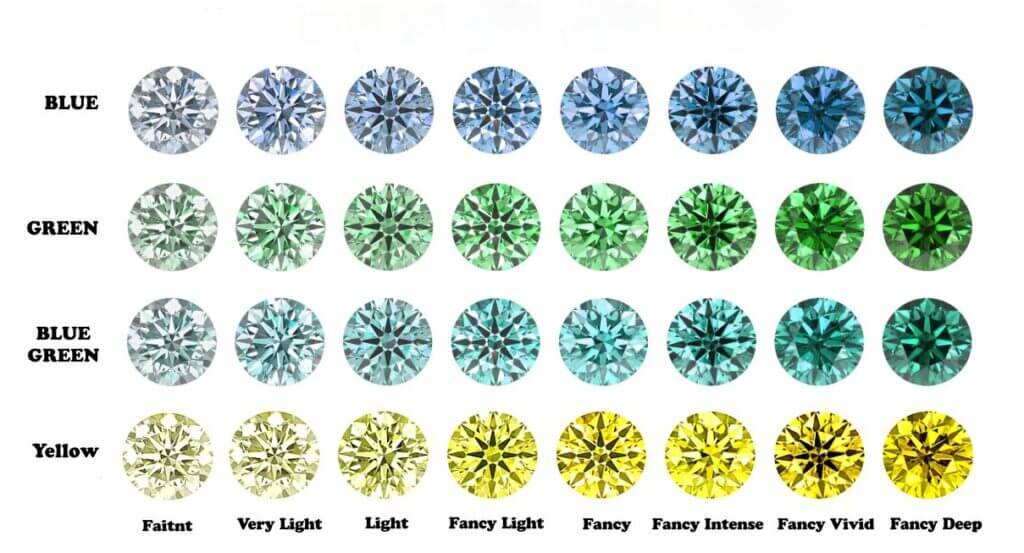
SHADE
( A quality cut grade allows a diamond to express its natural sparkle and scintillation. )
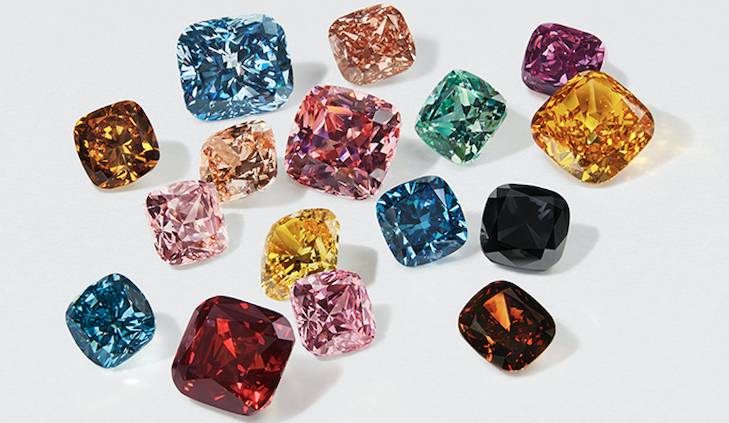
Fancy Color
Intensely colored diamonds are known as “fancies” or fancy-colored diamonds.
Natural fancy color diamonds are rare and expensive. The rarity of
these diamonds is due to the fact that they are formed in a unique
way. They are formed when extreme pressure and temperature cause
chemical reactions that create trace amounts of impurities. These
impurities are what give them their unique colors. It’s said that out
of 10,000 normal diamonds one of them would be a fancy color
diamond. The most popular fancy color diamond is Yellow. Other
colors such as pink, blue, purple, and red can be extremely expensive.
Fluorescence
As its name suggests, this characteristic refers to the diamond's capacity to fluoresce when exposed to ultraviolet light (UV).
The most common source of UV is black light. When exposed to UV light, many diamonds will give off a luminous blue coloration. Although fluorescence may be displayed in various colors, blue is the most common in diamonds. Fluorescence is caused by trace amounts of nitrogen found in the diamond's carbon structure. When the nitrogen atoms absorb the UV light, they release it as visible light, resulting in a blue glow. The fluorescence of a diamond is defined by its intensity as either None, Faint, Medium, Strong, or Very Strong.
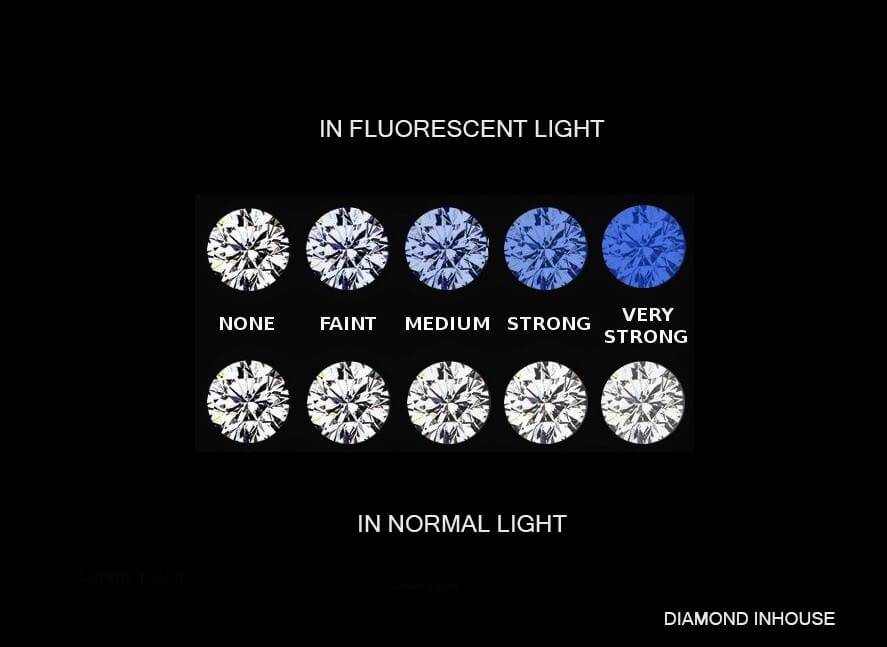
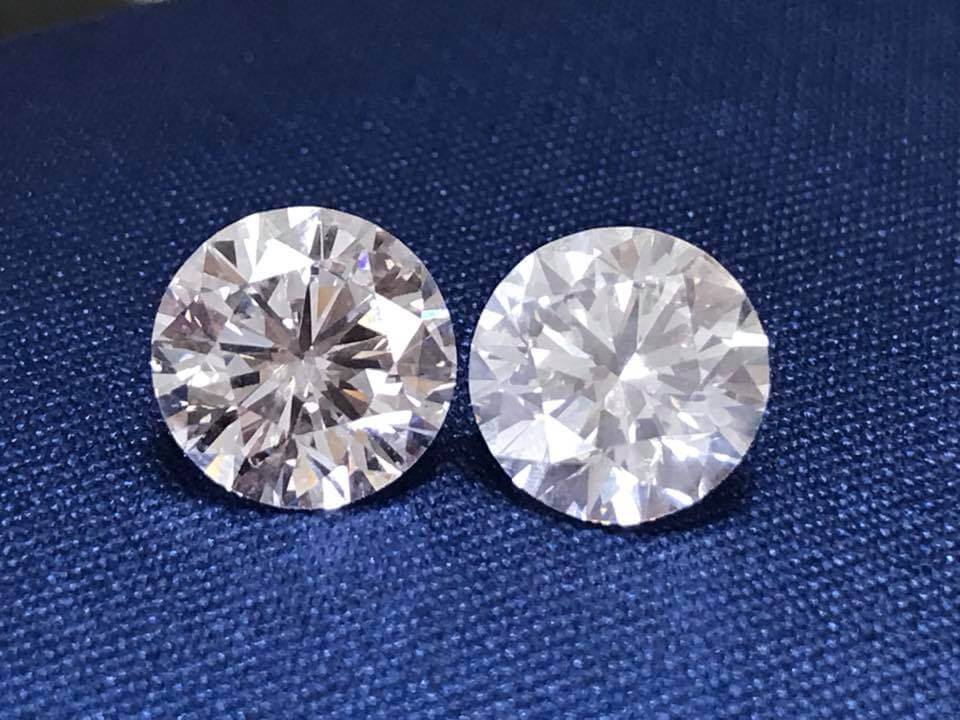
Milky
It is any hazy or cloudy inclusion in a diamond.
These inclusions appear misty white or grey. Clouds may be either confined to a small area or spread throughout the stone. Clouds are usually caused by the presence of many small crystal inclusions that are too small to see individually. These inclusions interfere with the way light passes through the diamond, which causes a hazy or cloudy appearance. They usually affect the luster and brilliance of a diamond.
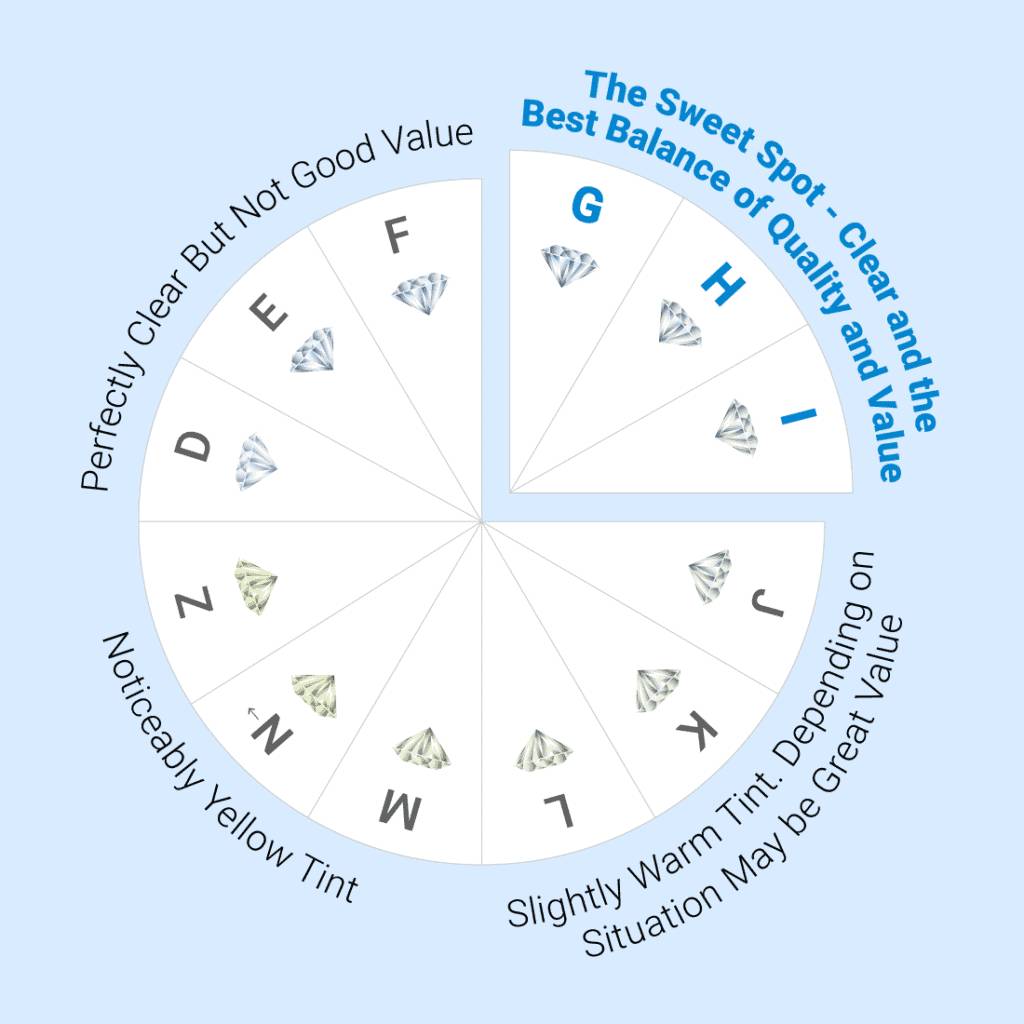
Fancy Colored
Diamond Grading
Fancy coloured diamonds are measured differently
from normal diamonds.
The grading scale is based on the color intensity.
The GIA fancy color grading scale is: Faint, Very
Light, Light, Fancy Light, Fancy, Fancy Intense,
Fancy Vivid, Fancy Deep and Fancy Dark. The grading scale is based on the hue, tone and saturation of the diamond. The more vivid the color, the greater the value of the diamond.
Luster (Adamantine)
Adamantine is the term used to describe the Luster exhibited by Diamonds and Gems with a Refractive Index of 1.9 – 2.5. The word adamant derives from the Greek word “adamastos” which means untameable.
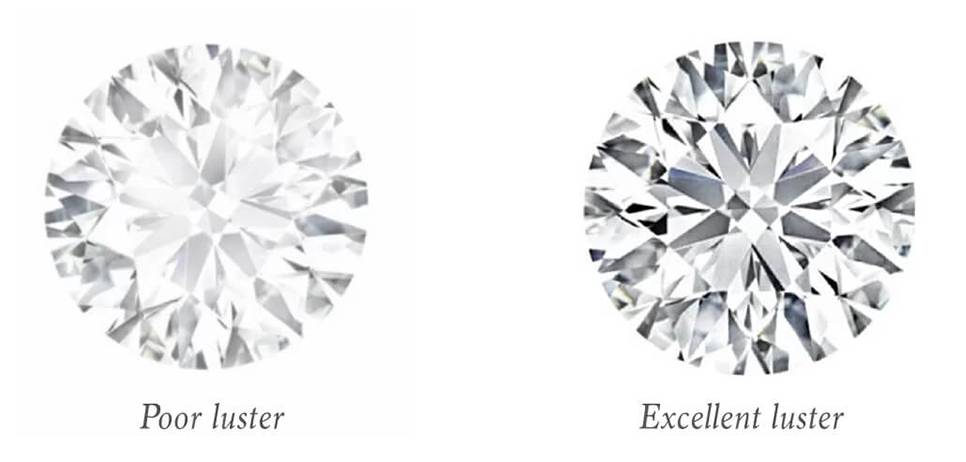
Luster is the quality and quantity of light reflected from a gem's surface and is a function of refractive index and
surface perfection (degree of polish). If nearly all the light falling upon a gem's surface is reflected, resulting in a very
bright appearance, it is said to have high luster. If much of the light is absorbed by the gem, resulting in a dull reflection,
it is said to have low luster.
Clarity
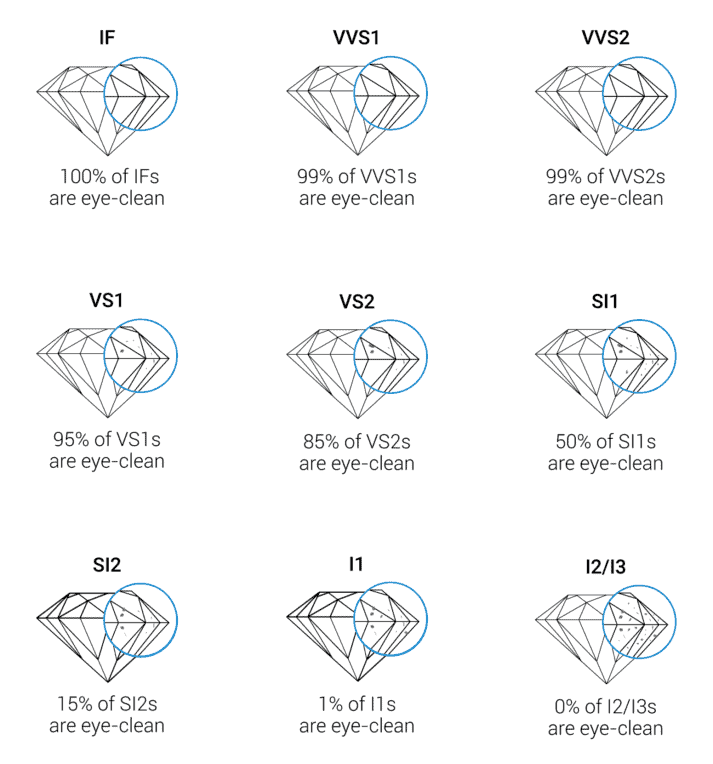
Diamonds are graded for clarity on the basis of internal and external imperfections present.
Diamond clarity refers to internal features (inclusions) and surface characteristics (blemishes) within or on
a diamond when viewed under 10x magnification under standard viewing conditions. At ROYAL DIAM clarity scale
includes ELEVEN clarity grades ranging from FL to I3 in compliance with the International standard.
FL
Flawless
No internal or external inclusions of any kind visible under 10x magnification to a trained eye, the most rare & expensive of all clarity grades.
IF
Internally Flawless
No internal or external inclusions of any kind visible under 10x magnification to a trained eye, the most rare & expensive of all clarity grades.
VVS-1 , VVS-2
Very Very Slightly Included 1
Usually just one tiny inclusion visible only to a trained eye under 10x magnification.
Very Very Slightly Included 2
Usually just one tiny inclusion visible only to a trained eye under 10x magnification.
VS-1 , VS-2
Very Slightly Included 1
Very small inclusions visible with 10x magnification.
Very Slightly Included 2
Several very small inclusions visible with 10x magnification.
SI-1, SI-2
Slightly Included 1
Small inclusions visible with 10x
magnification.
Slightly Included 2
Several small inclusions visible with 10x magnification.
I-1 , I-2
Included 1
Flaws that is visible to the naked eye.
Included 2
Flaws that is visible to the naked eye.
HEART & ARROW
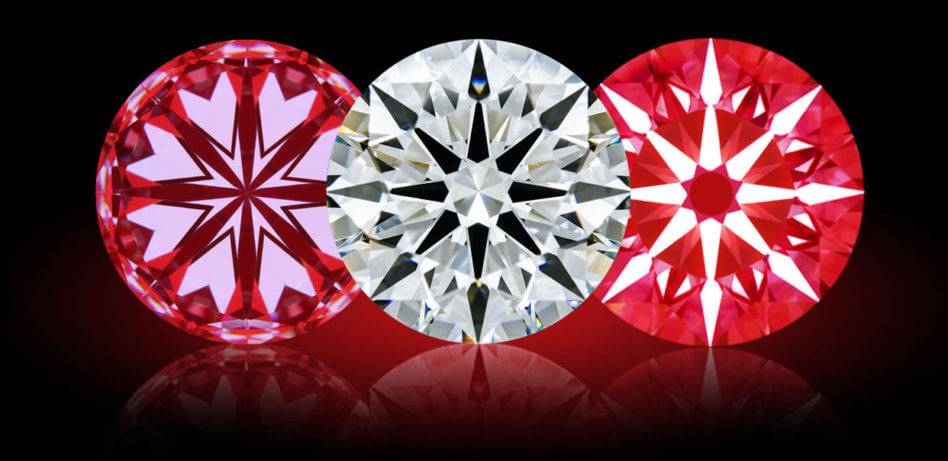
The Hearts and Arrows pattern refers to a symmetric light pattern visible using a special viewer in diamonds cut within certain narrow specifications.
The brilliant cut diamond has 57 facets. When all these facets are in harmony, the result is a repeatable and nearly perfect pattern of 8 (eight) symmetrical arrows when the diamond is viewed from the top and 8 (eight) symmetrical hearts when the diamond is viewed from the bottom. Perfectly symmetrical Hearts and Arrows will command a premium price and are of the highest quality. This is due to the craftsmanship that has gone into creating them and the fire and brilliance which is omitted from them.
What to look for when viewing Hearts and Arrows?
When viewing a diamond, it should contain 8 hearts and 8 arrows but the placement, symmetry, and size of these shapes play an important part in the actual grading of a Hearts and Arrows diamond. What you should be looking for are
Symmetry
Each shape should be symmetrical and reflect like a mirror on those opposite it. It is important not to mix optical symmetry up with symmetry in a GIA certificate – although running on the same concept, they are 2 different entities.
SIZE
Each Heart and Arrow should be the same size across the whole diamond.
Uniform shape
Hearts should look like hearts and arrows should look like arrows with a uniform shape across every aspect.
Equal spacing
Each shape should be equally spaced from its neighbor and in turn equally spaced from the shapes opposite to it.
Fitting
Arrows must fit into the gap between hearts with the base of the heart fitting into the V of the arrow.
Coloration
Hearts should be one color and not of a two-tone effect, however, this is a minor influential feature.

